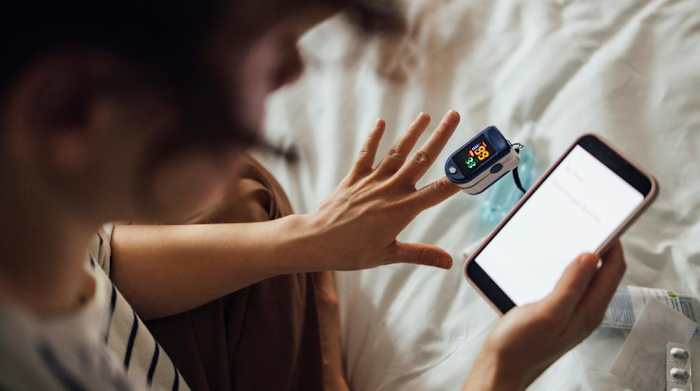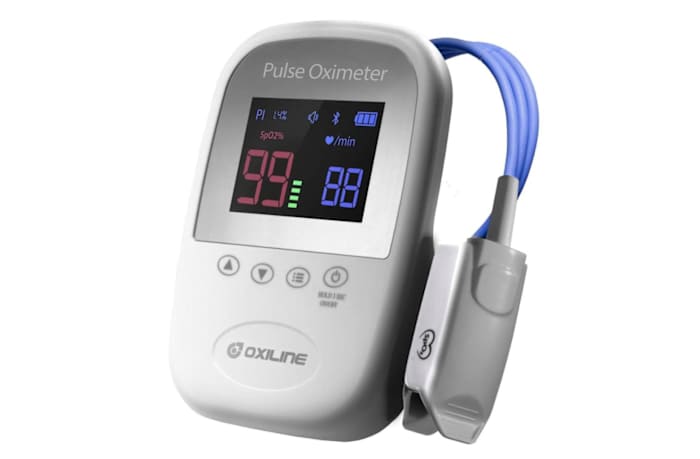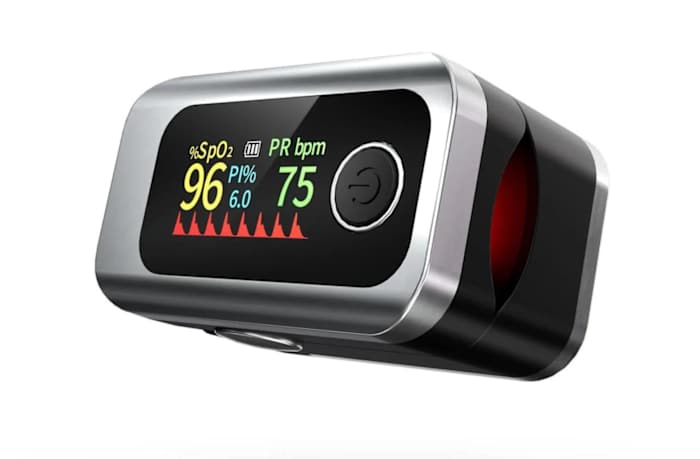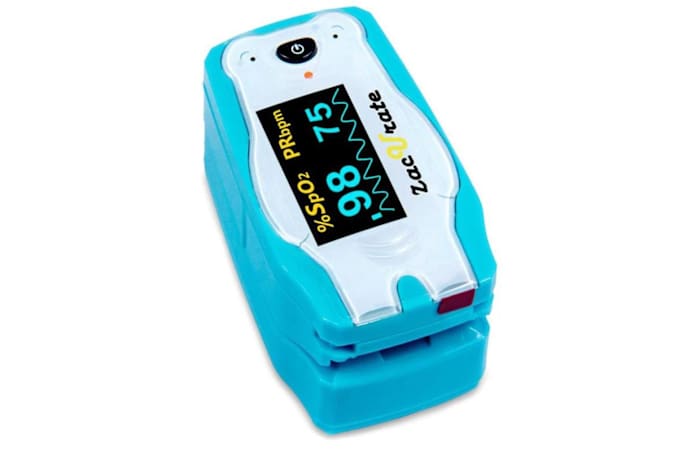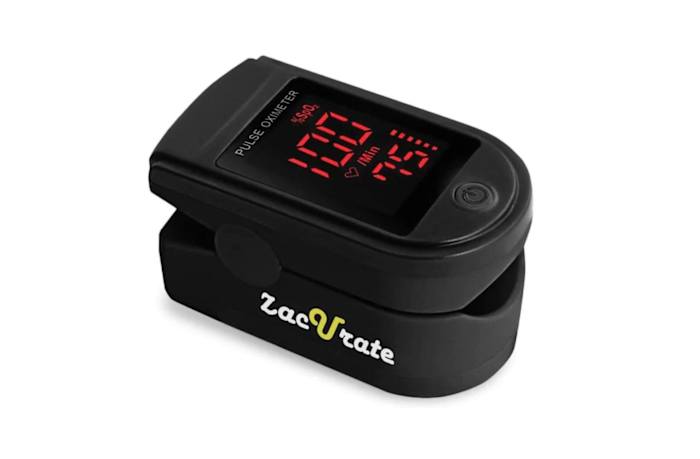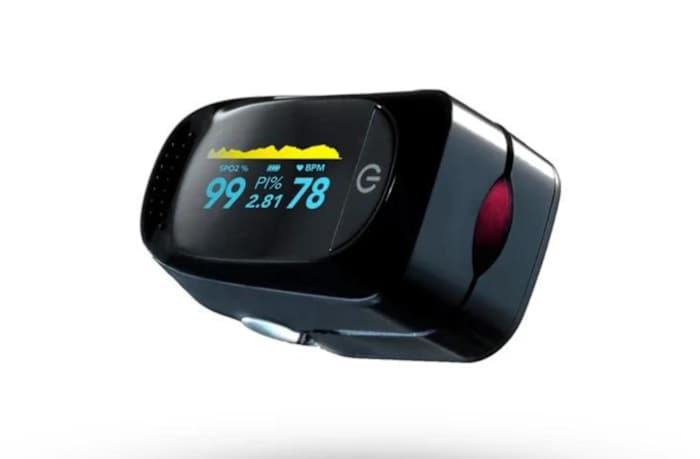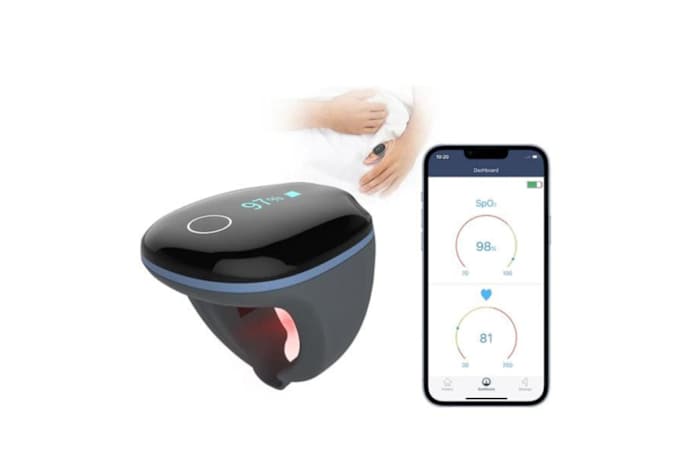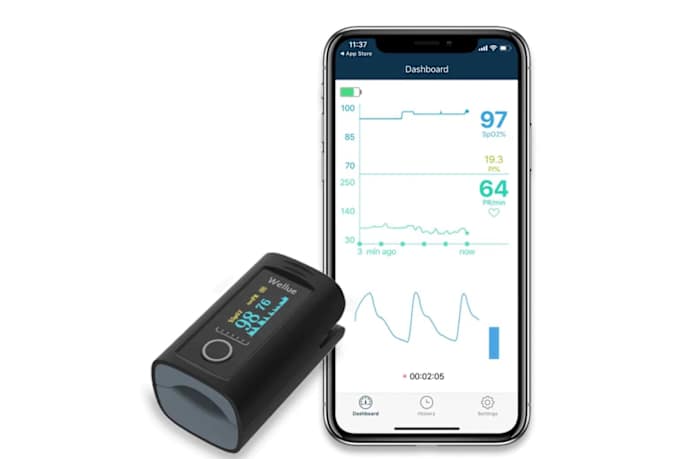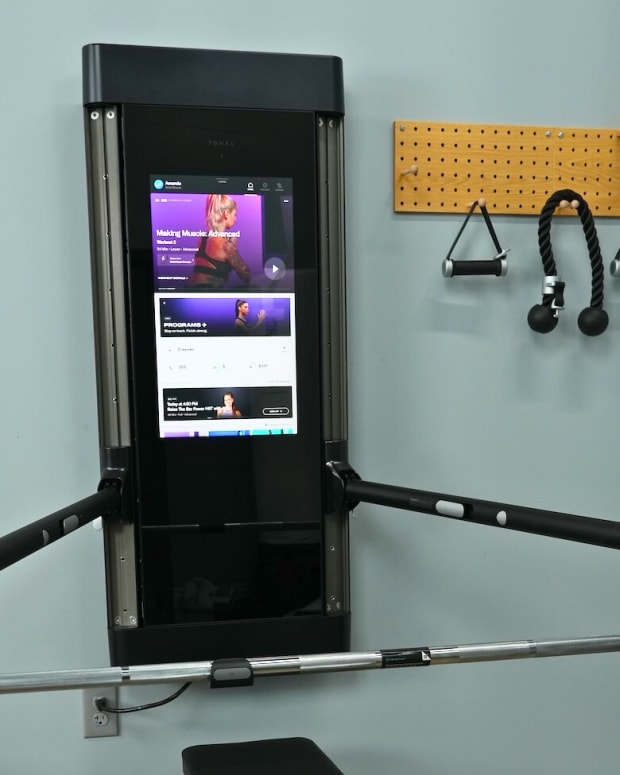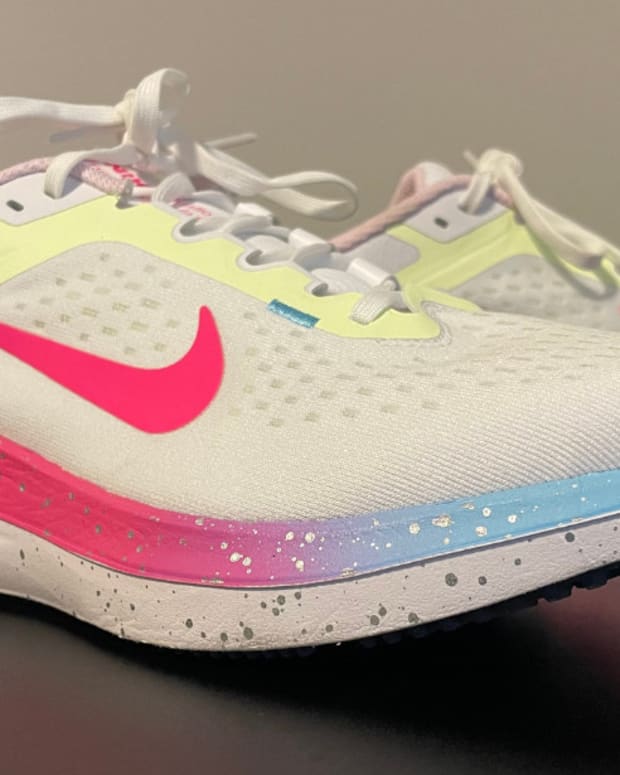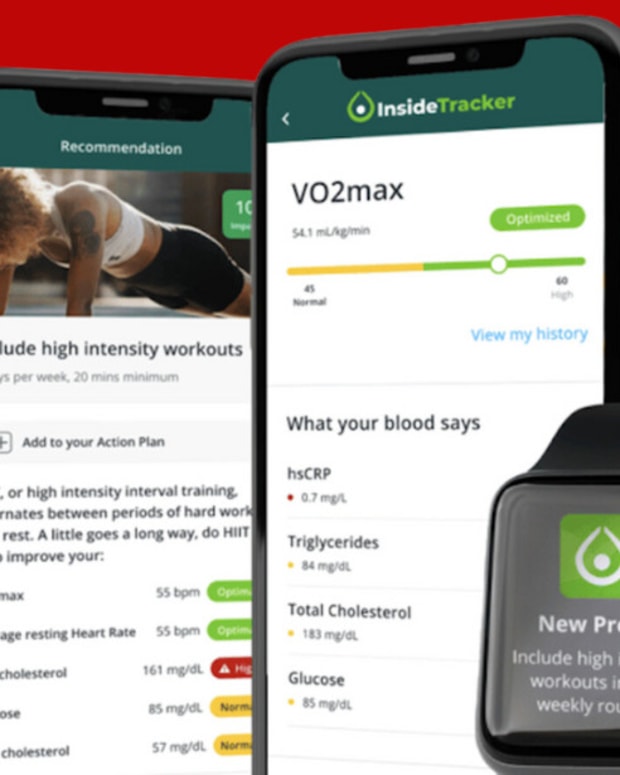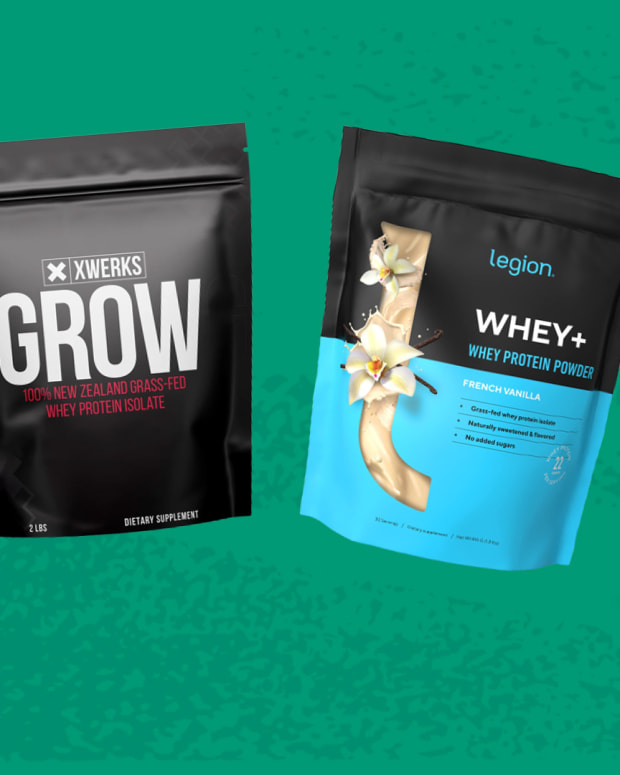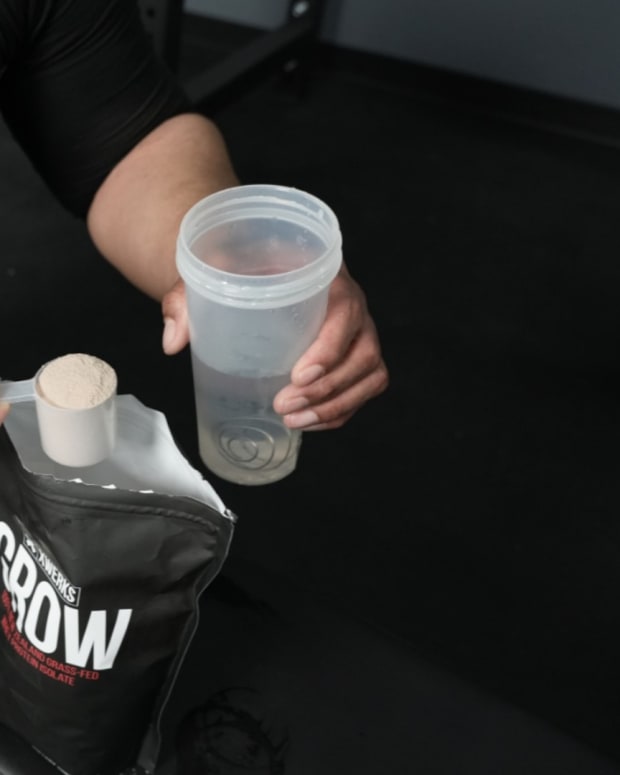The products featured in this article have been independently reviewed. When you buy something through the retail links on this page, we may earn commission at no cost to you, the reader. Sports Illustrated editorial staff are not involved in the creation of this content. Learn more here.
Thanks to the global pandemic, most people are familiar with the painless probes used to measure the oxygen levels in our bodies. If you didn't know, these nifty contraptions are called pulse oximeters, and they are helpful for many different types of people for many different reasons.
The technology in at-home pulse oximetry tracking has advanced in recent years, which is great news for people looking to monitor their blood oxygen saturation levels (SpO2). Many health professionals think of pulse oximetry as the fifth vital sign, which is why there is a new wave of health apps, devices and trackers that monitor this essential measurement of health. We’ve researched pulse oximeters for home use and found the products listed here as the seven best devices in 2024.
The beauty of a pulse oximeter lies in its ability to provide you with real-time insights into your body's oxygen levels and heart rate, enabling you to make informed decisions about your health. By monitoring your oxygen saturation, you can gauge the efficiency of your cardiovascular system. Here, we take a look at the seven best pulse oximeters and discuss which one might be right for you and your needs.
This content is meant to be informative, but should not be taken as medical advice. It is not intended for use as diagnosis, prevention or treatment of health problems. Always speak with your doctor before starting any new supplement or exercise regimen.
Our Picks for Best Pulse Oximeter in 2024:
- Best Overall Pulse Oximeter: Oxiline Pulse MD Pro
- Best Pulse Oximeter With App: Oxiline Pulse XS Pro
- Best Pulse Oximeter For Kids: Zacurate Children Digital Fingertip Pulse Oximeter
- Best Budget Pulse Oximeter: Zacurate Pro Series 500DL Fingertip Pulse Oximeter
- Best Display Pulse Oximeter: Oxiline Pulse 9 Pro
- Best Pulse Oximeter Ring: Wellue O2 Ring
- Best Fingertip Pulse Oximeter: Wellue 60FW Pulse Oximeter
Best Overall Pulse Oximeter: Oxiline Pulse MD Pro
Key features & specs
- Dimensions: 0.9 pounds, 2.75-inch screen size
- App: Oximeter Store App
- Power source: Two AA Batteries
- Battery life: Three months
- Price: $119
Oxiline products are known to be some of the most accurate at-home medical devices on the market. The equipment from Oxiline is also well-made and lasts a long time. The brand offers a lifetime warranty and a 30-day money-back guarantee. It specializes in pulse oximeters and blood pressure machines.
The Oxiline Pulse MD Pro is a more expensive pulse oximeter, but don’t let the price tag scare you off—it's a high-quality device. It’s made up of a screen and reader, which attaches to the fingertip monitor with a three-foot tube. Like other Oxiline devices, this uses VTECH technology for the most accurate SpO2 reading you can get at home. It’s also Food and Drug Administration (FDA) approved and offers wireless connectivity that uploads automatically to the Oxiline app, where it’s logged for easy access to your medical history. What most people like about this machine is how easy it is to understand the huge, brightly lit screen.
We chose this as the best overall pulse ox monitor because it truly is the gold standard when it comes to getting an accurate reading quickly and easily. It’s a no-nonsense machine that makes it very easy to keep track of your data on the app.
Many reviewers mentioned that this worked well for overnight monitoring thanks to the lightweight finger clamp. The battery life was another positive. Everyone appreciated how the readings were close or right on when compared to those in the doctor’s office. The only complaint people had was the high price. At $119, it is a bit high, but it’s well worth it for something that could be potentially life-saving.
What we like:
- Clear display, bright and easy to read
- Great for overnight monitoring
- Long battery life
- Accurate
What to consider:
- More expensive than many models
- Bigger size
Best Pulse Oximeter With App: Oxiline Pulse XS Pro
Key features & specs
- Dimensions: Not listed
- Weight: 0.2 pounds
- App: Oximeter Store App
- Power source: Two AAA Batteries
- Battery life: Three months
- Price: $89.00
Oxiline is a technology company that makes medical equipment that’s easy and convenient for the general public to use. Its mission of helping regular people take control of their own health is one reason the company stands out. Driven by innovation, it specializes in making pulse oximeters, though it also offers glucometers, TENS machines, smart scales, thermometers and blood pressure monitors as well.
The OximeterPulse XS pro measures SpO2, BPM, plethysmography and perfusion index through a finger sensor. It uses VTEC AX to take measurements, as opposed to the more common LED or infrared light method. The VTEC AX nano sensor technology is a replication of what is used in medical facilities, and Oxiline claims this is what gives its products unparalleled accuracy.
In addition to its accuracy, it makes our list because the app is reportedly easy to use and helpful. It makes use of easy-to-read graphs to measure several key health markers. At a glance, users can see their SpO2 and BPM tracked by the day, week and month on a line graph. Users' pulmonary function comes through in a waveform graph in real-time. This pulse oximeter comes with a lifetime warranty and 30-day money-back guarantee.
So what do customers have to say? It received good reviews on the Oxiline website from multiple nurses, including visiting RNs and CNAs who use them in their patients’ homes. Clear numbers, helpful graphics and the responsiveness of the readings were other highlights reviewers mentioned.
The products themselves get a lot of love, but a few unhappy customers were plagued by shipping issues and said customer service was less than helpful in these situations. However, this was a small percentage of the nearly 2,000 otherwise rave reviews on the Oxiline website.
What we like:
- Multiple health measurements with solid accuracy
- Great price
- Useful app that helps you visualize and log your health data
What to consider:
- Concerns about shipping and the responsiveness of customer service
Best Pulse Oximeter for Kids: Zacurate Children Digital Fingertip Pulse Oximeter
Key features & specs
- Dimensions: Two inches L x 1.15 inches W x 1.1 inches H
- App: No
- Power source: Two AAA batteries
- Battery life: Three months
- Price: $34.99
Zacurate is a top brand that focuses on pulse oximeters exclusively. The company launched because its founders saw there were a lot of oximeters on the market that had very inaccurate results. The company has quickly become recognized a producer of highly accurate monitors and even has a partnership with the USA Luge team.
From RSV to asthma to an unspecified virus, when kiddos are sick, it’s helpful to have all the information you can to help get them healthy. A pulse ox reader is something nice to have on hand in your at-home emergency kit, especially when dealing with a pediatric respiratory condition. But if you get one that’s for an adult, it won’t accurately read little fingers, so Zacurate came out with a smaller size.
The LED screen lights up with a SpO2 and pulse rate reading once placed onto the finger. A plethysmograph graph helps users understand the strength of the blood flow. Each wave represents a heartbeat, and when the height of the wave is consistent, it means that’s the best time to take a reading. It’s also cool for kids to look at (to get a reading, you press the bear's nose) and can help them understand how their hearts and blood work together. In clinical trials, the Zacurate Children Digital Fingertip Pulse Oximeter had an accuracy deviation of less than two percent.
We love this one for kids because of its sweet features and vibrant colors. It’s also compact, lightweight and fast so they don’t have to wait forever with a bulky contraption on their hand. Overall, it’s a comfortable and easy device that can give you an accurate reading to keep your child well.
Parents who reviewed this product on the Zacurate website have overwhelmingly good things to say about it. A few who have children with asthma say this is the only pulse oximeter that gets an accurate reading. Another reviewer mentioned that it also works for elderly patients who might like a more delicate monitor.
What we like:
- Accurate and easy to use
- Cute design that entertains kids
- Lightweight and fits little fingers
What to consider:
- Can take some trial and error to figure out finger placement
Best Budget Pulse Oximeter: Zacurate Pro Series 500DL Fingertip Pulse Oximeter
Key features & specs
- Dimensions: 1.97 x 1.97 x 0.79 inches
- App: No
- Power source: Two AAA batteries
- Battery life: 40 hours
- Price: $22.65
The Zacurate Pro Series 500 Pulse Oximeter is a reliable device that allows you to get an accurate SpO2, pulse rate and pulse strength in just 10 seconds. The readings are conveniently displayed on a large digital LED screen.
This model has been designed with sports and health enthusiasts in mind. There are many reasons athletes might want to use a pulse oximeter during training. When you’re exercising, the level of oxygen and other gasses in your bloodstream reflects your body's efficiency in oxygen intake and processing. According to an article in Medicine & Science in Sports & Exercise, measuring your oxygen saturation level can be a good indicator of your fitness level and capabilities, especially in endurance activities. Using a pulse oximeter reading can also help you know if you’re recovering effectively as well as indicate when you’re ready to perform while at altitude. While at altitude higher than sea level, your SpO2 might be lower and and your heart rate and respiratory rate might be higher. This is the result of your body trying to balance out the lack of oxygen in the air by getting it through your body faster. If you’ve ever been huffing and puffing while visiting mountains, this is what’s causing it.
If you’re an advanced athlete planning to race at a higher level than where you live, the Zacurate Pro Series 500dl Fingertip Pulse Oximeter can help show when you’re acclimated to the elevation. That means, of course, going to your destination days to weeks before the event to make sure your body has time to adjust and using the pulse oximeter to see when your levels are back to normal.
But even for novice hikers attempting a steep climb with a lot of elevation gain, keeping an eye on the numbers on the monitor at different stops along your trek can keep you safe. Sometimes people go too hard too fast and end up with altitude sickness, which the Cleveland Clinic says is most likely to happen at altitudes above 8,000 feet.
The Zacurate Pro Series 500DL Fingertip Pulse Oximeter comes with a lanyard and a silicone cover for protection against dirt and physical damage. These added features make it easy to take with you and access during travel, exercise and physical activities.
It offers a 12-month warranty, which isn’t as great as some of the machines with lifetime warranties, but still pretty good for the price. One thing we want to underscore is that this device is not marketed or intended as a medical monitor. But if you’re needing something for overnight monitoring or logging oxygen saturation levels due to sickness, you’re better off paying the extra couple dollars for an FDA-approved or otherwise medically endorsed pulse oximeter. For athletes and explorers, though, this one is a great option to keep you well-trained and safe.
Customers say it does what it says. Many report getting more than three years out of the monitor. Some reviews on the Zacurate website mention that it’s hard to get a reading when your fingers are cold, which is typical of most pulse oximeter monitors.
What we like:
- Easy to use and understand
- Great price
- Includes lanyard for easy transport
What to consider:
- Not intended for medical use
- No app, which would be useful for athletes
Best Display Pulse Oximeter: Oxiline Pulse 9 Pro
Key features & specs
- Dimensions: 0.2 pounds
- App: No
- Power source: Two AAA batteries
- Battery life: 30 hours
- Price: $58.65
The Pulse 9 Pro is a great option for customers who want fast results presented on a clear display. This pulse oximeter has less than one percent difference between its results and results taken in an inpatient setting. A large part of this is due to the company’s use of VTECH sensors instead of the LED or infrared method of monitoring blood flow and oxygen saturation levels. This specific device uses a VTECH A9 Sensor, which is very sensitive and delivers fast and reliable results.
For at-home use and heart health monitoring, it’s a solid over-the-counter solid to own. The OLED display is easily viewed from any angle. We think that’s a great feature for people with diminished eyesight or who cannot easily move from one place to another.
Another feature that earned praise was its speed. The Oxiline Pulse 9 Pro takes less than seven seconds to deliver a reading. It’s not finicky when it comes to finger positioning so you don’t have to spend a lot of time adjusting and readjusting to get results. You can also set up an alarm in case oxygen levels drop.
This monitor has earned five stars from 90 percent of the nearly 50,000 reviews on the Oxiline website. Many reviewers on the Oxiline site said that having the SpO2, pulse rate and blood flow graphics clearly displayed on the monitor made it easy to use and capture an accurate reading. The device is reportedly easy to use: Customers say you just install the batteries, which are included, and stick your finger in the machine.
What we like:
- Clear and large display on a relatively compact machine
- Accuracy and reliability
- Lifetime warranty and fast delivery
- Easy to use
What to consider:
- Slightly pricier than some other models
Best Pulse Oximeter Ring: Wellue O2 Ring
Key features & specs
- Dimensions: 4.21 x 3.82 x 2.76 inches
- App: Yes
- Power source: Lithium-ion battery
- Battery life: 16 hours
- Price: $159.99
Wellue is a leader in innovative medical equipment. The brand produces medical-grade devices as well as direct-to-consumer monitors ranging from blood pressure monitors to sleep monitors to pulse oximeters. Wellue wanted to make a ring that is just as accurate as the regular pulse ox monitors.
The ring is soft, light, durable and small. You can wear it for up to 16 hours without it needing to be recharged. We really liked that feature too—it’s similar to any wearable fitness tracker in that you just plug it in to charge. If you wanted, you could wear the ring all day to get continuous feedback on your pulse rate and SpO2 levels. Then you could upload your readings and data into the app, which has unlimited storage. The ring itself will alert you if any readings are concerning.
The app stores your readings and tracks the data in easy-to-comprehend graphs. The aesthetics of the app leave something to be desired, but since this is for more practical health purposes, we can let that slide.
The Wellue description of this product says it’s intended mostly for sports and health enthusiasts, and people considering this device should note that it’s not meant to be a medical-grade device, and is not approved by the FDA.
Most reviewers on Wellue's website were pleased with the ring. They liked that it was adjustable. Some were excited to use something that didn't have to clip onto their finger and that could move with them while they moved, and some reviewers said the alarm system was really helpful for waking them if they happened to have a sleep apnea event.
The biggest concern for many customers was accuracy. The Wellue Ring boasts high accuracy rates but it cannot be compared to medical-grade units. Still, for a general idea of blood oxygen saturation levels and your pulse rate, especially for those in decent health just looking to track these markers, this is a reliable device.
What we like:
- It’s a soft ring and doesn’t clip on your fingertip
- The ease of use of both the device and app are great
- Alert system for abnormal readings is very useful
What to consider:
- Not intended to be used for medical conditions
- It’s expensive
- Strict one-year warranty
Best Fingertip Pulse Oximeter: Wellue 60FW Pulse Oximeter
Key features & specs
- Dimensions: 3.78 inches L x 2.87 inches W x 1.65 inches H
- App: No
- Power source: Two AAA batteries
- Battery life: 30 hours
- Price: $9.99
The Wellue 60FW fingertip monitor ranked among our favorites thanks to its good design, ease of use and accuracy within a two percent range. The 60FW model delivered results within eight seconds with highly visible readings. Data can be stored right on the device and up to 12 groups of SpO2 levels and pulse rates will be displayed. It’s not hard to pull up the historical data, which makes this a great device for people who cannot be bothered with apps and just need the readings listed out. This also comes with a convenient lanyard.
This pulse oximeter has a 4.6-star rating on Amazon with more than 10,000 reviews. Despite not being marketed as a medical device, reviewers were impressed by the accuracy and some even reportedly received approval from their doctors to use it to track their oxygen levels. People were also very impressed with the customer service who were responsive and eager to help with any malfunctions or difficulties.
What we like:
- Compact and comfortable
- Easy to use
- Good display and stores a good amount of data on the device
- Good price
What to consider:
- No app
- Not FDA-approved
What Is a Pulse Oximeter?
A pulse oximeter is a compact and portable medical device that tests how much of the hemoglobin in your blood is carrying oxygen, which is what we refer to as SpO2 or oxygen saturation. It works by emitting light through a sensor. The sensor analyzes the light absorption to determine the oxygen saturation. According to Johns Hopkins, the SpO2 reading offers a non-invasive way to monitor oxygen levels and assess overall respiratory function.
The Centers for Disease Control (CDC) lists that an oxygen saturation of 95 to 100 percent is normal for children and adults. If your reading is below 92 percent at rest, you should consult a physician. If it is below 88 percent, you should seek immediate medical assistance.
There are many reasons why you might need a pulse oximeter reading.
You have a virus or infection: Let’s be real. Most of us found out what a pulse oximeter was when Covid-19 reared its ugly head. Suddenly, we all needed to know what our oxygen levels were, especially when we felt any shortness of breath. A pulse oximeter is a useful tool when dealing with RSV, the flu, Covid and any other infection affecting the respiratory system. We’ve come to realize that this is a device that can be useful in knowing whether we need to see a health care provider, go to the hospital or stay home eating chicken noodle soup.
You have a chronic respiratory condition: If you deal with allergies, asthma, chronic obstructive pulmonary disease (COPD) or other lung diseases, keeping an eye on SpO2 is important. It can help you recognize if your breathing is compromised or if there is an acute oxygen deficit. Having an at-home device is essential in managing these conditions and can help guide your decision to seek medical treatment when necessary.
You’re an athlete or fitness enthusiast: Training hard and looking to make cardiovascular gains? You can use a pulse oximeter to optimize your routine. Monitoring oxygen saturation levels during exercise can help gauge cardiovascular efficiency. Your SpO2 level drops when you’re exercising because your muscles are using oxygen to work. It can also serve as an early warning sign if oxygen levels drop below normal. Some elite athletes may use a pulse oximeter when training at high altitudes to ensure their oxygen levels remain in safe ranges.
You’re traveling to a high-altitude destination: According to the Cleveland Clinic, anyone who goes to destinations 8,000 feet above sea level or higher could be affected by the change in altitude. You may want to have a pulse oximeter on hand to see how quickly you acclimate to elevation and avoid altitude sickness.
You have sleep apnea: Using a pulse oximeter, you can monitor your oxygen levels overnight to assess the effectiveness of your treatment.
Of course, keep in mind that while pulse oximeters can be valuable tools for monitoring oxygen saturation, it's always advisable to consult with healthcare professionals about your personal readings and what you need to do to keep yourself healthy and safe.
How To Use a Pulse Oximeter
Before using your pulse oximeter, make sure the device is charged or has working batteries. If this is your first time using the machine, read through the manufacturer’s instructions that should come included in the packaging. You’ll need to familiarize yourself with the specific functions, placement of readings and other features that could differ from model to model.
Clean the sensor area with a soft cloth or alcohol wipe. You want to make sure to wipe away any debris or oils that could hinder or give an inaccurate reading.
Now you have to prepare the hand or finger. You typically will want to use the index or middle finger for the devices that clip onto your fingertip. You’ll want to make sure that you have any nail polish removed, and make note that it will not get a good reading on someone who has gel or acrylic nails. This is because the light that the sensor emits cannot be transmitted through the polish or fake nail substance. Your hands should be warm. If you have a condition that makes your hands cold, run them under warm water before attempting to take your reading.
To properly position the fingertip clamp, gently slide your finger into the opening on the pulse oximeter. It should feel snug but not too tight.
Be still to ensure you get the best results. Most at-home machines will take less than 10 seconds to record your reading. It should come back and, if applicable, be transferred to your app. If you have any concerns about your reading, like it’s less than the CDC’s normal range of 95 to 100 percent, call a doctor or hospital.
Remember to always refer to the specific instructions provided with your own pulse oximeter. It’s also important to note that research has shown that people with darker skin tones experience less accurate readings. New technology is improving this issue, but it is worth it to talk to your doctor to make sure the device you’re using can get you the best results. Additionally, there are certain medical conditions that can cause results that might fall out of the “normal” range. For example, studies show that diabetics might have a lower SpO2 than people without diabetes.
How to Choose the Best Pulse Oximeter for You
Finding the best pulse oximeter for you is a personal decision. It really depends on why you’re using one and your personal preferences. Here are a few things to consider as you’re shopping for the right device.
Do you need a medical-grade device? If the answer is that you do need a medical-grade pulse oximeter, then this will outrank every other answer to the criteria on this list. There are a few FDA-approved devices on our list that will give you accurate results with one percentage of readings in a clinical setting. Oxiline is the brand to check out if this is what you need. Not on our list, but notable for medical-grade instruments, is the brand Masimo, which your doctor can prescribe.
Do you need to store your results? Some people will want their results displayed in a graph. This might be a wonderful option for athletes looking to improve their heart rate and SpO2 levels over time. It might be nice for people with chronic conditions like asthma who can show their doctor and work with them to find trends or triggers. The best way to track this will be to buy an at-home pulse oximeter that is easily connected to an iPhone or Android app. Just be sure that the app will be compatible with the phone and processing system you’re currently using.
If you simply need a device to check on your SpO2 on the daily and make sure you’re in a good range, then one of the cheaper, less-complicated monitors will work just fine.
Do you need a specific design? The standard pulse oximeter will be a compact finger clip. New tech has made it possible for the device to be a soft ring or a softer clamp. You’ll want to choose what is suitable for your comfort level. Some people like the ring if they are using it while they sleep.
Also, if you are using this for kids, there are many cute designs on the market at reasonable prices. Don’t go for the boring gray one—choose a pink pig or blue bear.
Our Methodology: How We Chose the Best Pulse Oximeters
To choose the best pulse oximeters, we thought about why and how people might be using these devices at home. We understand that usability, comfort and ease of understanding the data would be key for people in the market for a quality monitor. Here’s everything we paid attention to:
Accuracy: More than anything, we wanted the pulse oximeters on our list to have the best accuracy at-home devices had to offer. We aimed to choose products that fell under a two percent differential when compared to medical-grade devices. The products on this list make use of evidence-based technology to deliver reliable results.
Ease of Use: Nobody needs to spend time reading long, complicated instructions when they are trying to test their blood oxygen saturation level. The concept is complicated enough. The oximeters that made the list were picked because they worked quickly and the results were easy to interpret. We also ensured the device-to-app data transfer, when applicable, was seamless.
App and User Experience: If the device had a corresponding app, we tested the app to make sure it was delivered as promised. We chose apps that offered a lot of storage, meaningful graphs and easy accessibility.
Price: Pulse oximeters come in a range of prices. We wanted to highlight budget-friendly devices as well as models on the higher end of the cost spectrum. We kept them below $200.
Warranty: We made sure to note warranty information for the different devices and companies.
Pulse Oximeter FAQs
What are the two readings on a pulse oximeter?
Most pulse oximeters will show at least two numbers. One is your oxygen level or SpO2 and the other is your pulse rate. Some will also show an illustration that looks like a wave called a perfusion index, which helps ensure the accuracy of the reading.
Which finger is best for a pulse oximeter?
You should use your index or middle finger for a pulse oximeter test.
How accurate are pulse oximeters?
Yale Medicine says that most pulse oximeters are on average accurate within two and four percent of the actual blood oxygen saturation level. Many things can affect the accuracy of a reading including nail polish, skin tone and if a patient’s hands shake or jump.
Takeaway: Are Pulse Oximeters Worth It?
Since pulse oximetry is considered by some doctors to be the fifth vital sign, you might wonder why we all haven’t had these in our homes already. For some with chronic conditions or who are at high risk if they contract an illness, it can be an absolute necessity to monitor oxygen levels. It’s well worth it to get a device. For others, it’s a nice luxury. If you’re an athlete or planning a mountain vacation, why not spend between $20 and $60 for a device that could really help you on your health journey? Owning a pulse oximeter is a great way to be empowered and informed about your own health.
Related Post: Best Portable Oxygen Concentrators
Prices are accurate and items in stock as of publish time.
